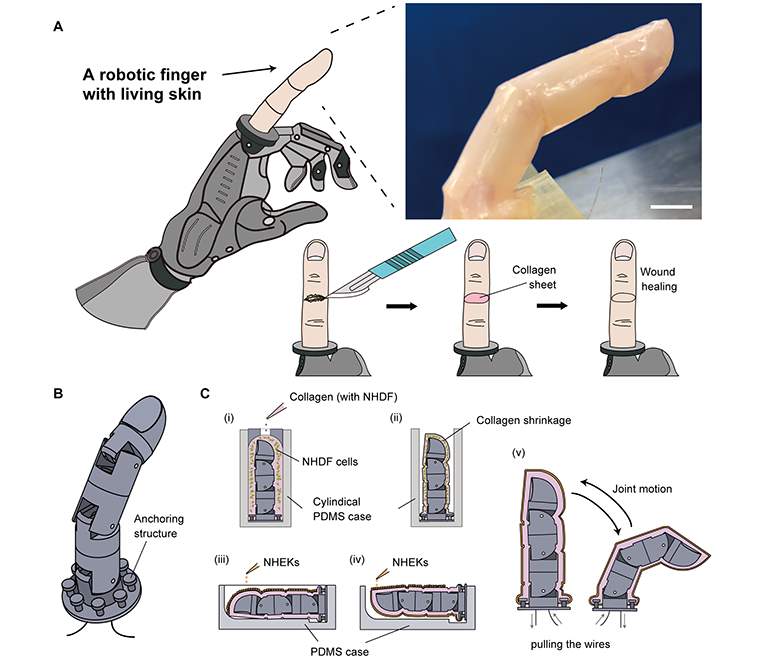Researchers at the University of Tokyo have developed a method to coat a robotic finger in a living “skin” layer. The living coating is strong and flexible enough to allow the robotic finger to bend and flex, and it can repel water and even self-heal if damaged.

The technique involves coating the robot in a “primer” layer of collagen and human dermal fibroblasts, which are two of the major components of the connective tissue within the skin. This layer naturally shrinks to conform with the robot surface. A second layer of human epidermal keratinocytes, which form the outer layer of skin, readily adheres to the primer layer. The cell coating gives the robot the feel of real skin, and it could pave the way for medical robots and prosthetics that feel like the real thing.
Prosthetics are advancing apace, with advanced robotic capabilities, and future developments could even lead to biohybrid systems that contain living tissue, making them more difficult to tell apart from natural tissues when they are observed or touched. Other potential applications of such biohybrid systems include humanoid robots that interact with patients, such as robots that fulfill healthcare or assisted living roles, that look and feel more natural.
As a first step towards such systems, these researchers have developed a technique to apply a living tissue layer to the surface of a robotic finger, as a proxy for human skin. Early attempts involved growing sheets of “skin” and then attempting to apply them to the surface of a robot. “With that method, you have to have the hands of a skilled artisan who can cut and tailor the skin sheets,” said Shoji Takeuchi, a researcher involved in the study. “To efficiently cover surfaces with skin cells, we established a tissue molding method to directly mold skin tissue around the robot, which resulted in a seamless skin coverage on a robotic finger.”

The new method devised by the researchers involves applying several layers to the finger. The first consists of collagen and human dermal fibroblasts. By incubating the finger in a suspension of these connective tissue components, a layer naturally forms and shrinks around the finger, providing a smooth continuous surface without the need to tailor sheets of tissue. A second layer of human epidermal keratinocytes readily sticks to the first “primer” layer.
“The finger looks slightly ‘sweaty’ straight out of the culture medium,” said Takeuchi. “Since the finger is driven by an electric motor, it is also interesting to hear the clicking sounds of the motor in harmony with a finger that looks just like a real one.”
So far, the researchers have shown that the tissue layer can self-heal by damaging it intentionally and then applying a collagen patch over the damaged area. The cells in the tissue layer regrew and helped to heal the wound.
Study in journal Matter: Living skin on a robot
Via: University of Tokyo
